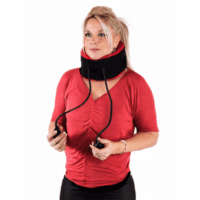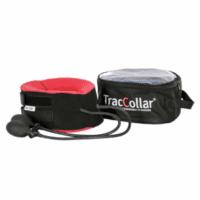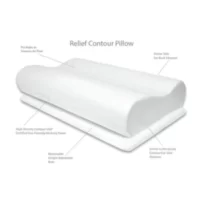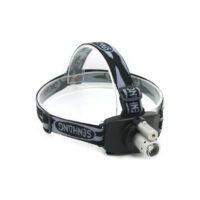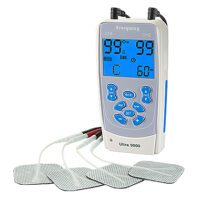Thoracic Outlet Syndrome
Article by John Miller

What is Thoracic Outlet Syndrome?
Thoracic Outlet Syndrome (TOS) compresses nerves or blood vessels as they exit the neck and shoulder region. The subclavian artery, vein, and lower roots of the brachial plexus often bear the brunt of this compression.
Key Areas of Compression
Three primary areas typically experience compression:
- Between the neck’s anterior and middle scalene muscles
- Between the collarbone and the first rib
- Underneath the coracoid process of the shoulder blade
Such compression results in symptoms like pain, numbness, and tingling. Effective diagnosis and treatment are vital for managing TOS symptoms.
Types of Thoracic Outlet Syndrome
TOS mainly falls into two categories: Vascular and Neurological.
- Vascular TOS: This rare type makes up just 2% of cases and compresses blood vessels like the subclavian artery or vein.
- Neurological TOS: Accounting for 98% of cases, this category has two subtypes:
- True Neurological TOS: Bony or soft tissue anomalies cause nerve compression.
- Symptomatic TOS: Repetitive activities or postures result in intermittent nerve and vessel compression.
Correctly identifying the TOS type is crucial for choosing the best treatment path.
Symptoms of Thoracic Outlet Syndrome

Common Thoracic Outlet Syndrome Symptoms
- Upper limb pain and altered sensations
- Pain radiating down the arm
- Changes in arm and hand temperature
These symptoms often worsen when lifting the arm or turning the head and can mimic other conditions like cervical radiculopathy.
Vascular TOS Symptoms
- Pins and needles in the arm and hand
- Weak or absent arterial pulse
- Swelling and colour changes in the arm
Neurological TOS Symptoms
- Pain in various upper body areas
- Pins and needles in the fingers
- Muscle spasms and hand coordination loss
Proper diagnosis and treatment by healthcare professionals are essential for effective symptom management.
Risk Factors for Thoracic Outlet Syndrome
Several factors can contribute to TOS:
- Bony abnormalities such as an abnormal first rib
- Trauma to the neck or shoulder
- Overhead repetitive movements
- Poor posture
- Weight gain
Diagnostic Procedures
Medical professionals may conduct cervical spine X-rays and other tests like MRI or EMG to rule out other causes for the symptoms.
Treatment Options for Thoracic Outlet Syndrome
Physiotherapy for Thoracic Outlet Syndrome
Effective physiotherapy treatment depends on a thorough evaluation and personalised plan, often involving:
- Posture correction advice
- Ergonomic assessment of work or home settings
- Activity modification to aid healing
- Strengthening exercises for shoulder stabilisers
- Spinal and rib mobilisation
- Tension-relieving massages
- Exercises to improve nerve mobility
Surgery for Thoracic Outlet Syndrome
If conservative treatments fail, surgery may be an option. The effectiveness of treatment varies, so tailored plans and follow-up care are critical.
Conclusion
In conclusion, Thoracic Outlet Syndrome is a complex condition that can significantly impact the quality of life. Understanding the nature of TOS, recognising its symptoms, and being aware of the risk factors are important steps in managing this condition. Timely and accurate diagnosis is crucial, as it informs the appropriate treatment approach, whether that’s physiotherapy or, in more severe cases, surgical intervention. With the right care and attention, individuals suffering from TOS can manage their symptoms effectively and improve their daily functioning. Remember, if you suspect you have TOS, consult a healthcare professional for a tailored treatment strategy.
References
- Dengler, N. F., Ferraresi, S., Rochkind, S., Denisova, N., Garozzo, D., Heinen, C., Alimehmeti, R., Capone, C., Barone, D. G., Zdunczyk, A., Pedro, M. T., Antoniadis, G., Kaiser, R., Dubuisson, A., Kretschmer, T., & Rasulic, L. (2022). Thoracic Outlet Syndrome Part I: Systematic Review of the Literature and Consensus on Anatomy, Diagnosis, and Classification of Thoracic Outlet Syndrome by the European Association of Neurosurgical Societies’ Section of Peripheral Nerve Surgery. Neurosurgery, 90(6), 653–667. https://doi.org/10.1227/neu.0000000000001908
- Peek, J., Vos, C.G., Ünlü, Ç., van de Pavoordt, H.D.W.M., van den Akker, P.J. and de Vries, J.-P.P.M. (2017). Outcome of Surgical Treatment for Thoracic Outlet Syndrome: Systematic Review and Meta-Analysis. Annals of Vascular Surgery, 40, pp.303–326. doi:https://doi.org/10.1016/j.avsg.2016.07.065.
Neck Pain Causes
Welcome to the "Neck Pain Causes" page, where we comprehensively explore the factors contributing to neck pain. Neck pain results from a wide array of issues, including injuries to neck joints, muscle-related incidents, bone-related traumas, disc-related problems, nerve-related discomfort, vertigo symptoms, occupational triggers, headache and migraine factors, systemic diseases, and more.
Whether you seek information about muscle cramps, whiplash, osteoporosis, or posture improvement products, this page offers valuable insights and answers to frequently asked questions, aiding your understanding and management of neck pain causes.
General Information
Neck Joint Injuries
Muscle-related Injuries
Bone-related Injuries
Disc-related Injuries
Nerve-related / Referred Pain
Vertigo-related
Occupational Causes
Headache/Migraine-related
Systemic Diseases
Neck & Posture Products & FAQs
Neck Pain FAQs
Your Comprehensive Guide
General Neck Pain FAQs
Concerned About Neck Pain - When Should You Be?
- Learn the signs indicating when neck pain warrants a healthcare professionals visit.
Neck Pain Causes - What Are The Common Culprits?
- Explore the most frequent causes of neck pain.
Preventing Neck Pain - How Can You Avoid Neck Pain in the First Place?
- Discover strategies to prevent neck pain before it starts.
Text Neck - What Is It Exactly?
- Understand how modern technology contributes to neck pain.
Cervical Radiculopathy - How Does It Feel?
- Get insights into the symptoms and impact of cervical radiculopathy.
Age and Neck Pain - Is Neck Pain More Common as You Get Older?
- Find out how aging affects neck pain.
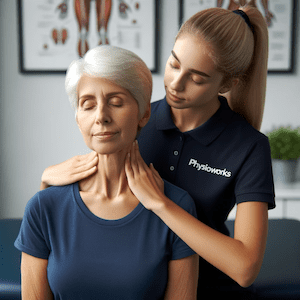

FAQs on Neck Treatment
Your Road to Relief Relieving Neck Pain - What Can You Do?
- Explore various methods to relieve neck pain.
Dealing with a Wry Neck - Can You Fix It?
- Learn about treatments and remedies for a wry neck.
Banishing Neck and Arm Pain - How's It Possible?
- Understand the connection between neck and arm pain and how to alleviate it.
Physiotherapy FAQs - What to Expect from Physiotherapy for Neck Pain?
- Know what to expect from physiotherapy sessions for neck pain.
Medication FAQs - When is Medication Necessary for Neck Pain?
- Learn about the role of medication in managing neck pain.
Surgery FAQs - When is Neck Surgery Considered as an Option?
- Find out when surgery becomes a necessary option for neck pain.
Neck Exercises
Exercise FAQs - What Neck Exercises Can Help Alleviate Discomfort?
- Discover exercises that can help in reducing neck discomfort.
Strengthening and Stabilising Your Neck - How It's Done
- Learn techniques to strengthen and stabilise your neck.
Stretching FAQs - How Can Stretching Benefit Your Neck Health?
- Understand the benefits of neck stretching exercises.
Neck, Vertigo & Dizziness FAQs
Can Your Neck Trigger Vertigo or Dizziness?
- Explore the link between neck issues and vertigo or dizziness.
Headache FAQs
Solving Neck-Related Headaches
- Find solutions for headaches caused by neck problems.
Bid Farewell to Neck Headaches - How to Do It
- Learn strategies to overcome neck-related headaches.
Posture FAQs
Correcting Years of Poor Posture
- Get tips on how to correct long-standing poor posture.
Improving Your Posture - What Steps to Take
- Understand the steps necessary for improving your posture.
Posture Improvement Products & FAQs - Your Posture Allies
- Discover products that can aid in improving your posture.
Lifestyle and Ergonomics FAQs
How Can Your Daily Habits Affect Neck Health?
- Learn how everyday habits impact neck health.
Pillow FAQs
Finding the Perfect Pillow
- Tips on how to find the ideal pillow for neck support.
Pillows: The Ultimate Guide
- A comprehensive guide to choosing the right pillow.
Healthiest Sleeping Postures - What Are They?
- Understand the best sleeping postures for neck health.
Choosing the Best Pillow - What Works for You?
- Guidance on selecting the best pillow based on individual needs.
Identifying an Unsupportive Pillow - The Telltale Signs
- Learn the signs of a pillow that doesn't provide adequate support.











